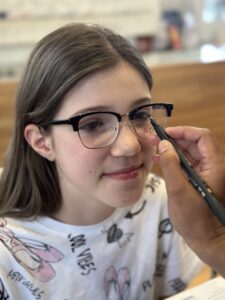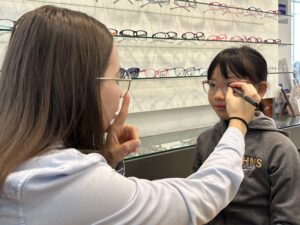July 5, 2023
By Vishakha Thakrar, OD, FAAO, FSLS
Many practitioners will implement every myopia management strategy available, and others will choose the devices that best suit their practice. Despite differences in scope of practice, all practitioners participating in myopia management will significantly impact patients’ eye health for decades to come.
Myopia management is a significant part of my primary care practice. Over a decade ago, I realized that implementing myopia management strategies was necessary to impact the growing myopic pandemic. Reducing the progression of childhood myopia is not only a matter of slowing down refractive error. We, as optometrists, have the power to alter the trajectory of the development of sight-threatening diseases such as myopic macular degeneration, retinal detachment, glaucoma, and cataracts. Why wouldn’t we be all in?
Current Prescribing Habits Await More Approved Interventions
Worldwide, most eye care practitioners still prescribe single vision glasses and contact lenses for juvenile-onset myopia. Depending on when you graduated from optometry school, leading with single vision correction was how we learned to prescribe for childhood myopia. Currently, a huge barrier to prescribing evidence-based interventions to slow myopia progression in children in the United States is the dearth of FDA-approved devices, particularly novel eyeglasses. As of this writing, only one medical device or pharmaceutical agent has the coveted FDA labeling indication for myopia progression control.
However, even in Canada, where several novel myopia management glasses and contact lenses have been available for some time, a five-year chart review showed that single vision glasses and contact lenses are prescribed considerably more frequently than myopia control devices as of 2021. Comprehensive education of eye care practitioners and parents is needed as more approved interventions become available.
Applying Research to Practice
There is abundant peer-reviewed evidence demonstrating that myopia interventions, including preventative and treatment strategies, are highly effective. This evidence can easily be applied to practice. We should use the research to educate ourselves and our team on myopia prevention strategies. These strategies include:
- More than two hours of outdoor time per day
- Recommendations on working distance
- Taking breaks while doing near work
- Using incandescent vs. LED lighting when doing near work
- The benefits of participation in sports
- Effects of poor or reduced sleep
We also should strive to remain current on the research behind myopia management spectacles, soft contact lenses, orthokeratology, and topical low-dose atropine. These strategies can successfully reduce axial length and refractive error progression in children and adolescents. Knowledge of when to implement each strategy is invaluable.
Implementation of Strategies
Only you can decide on the scope of your myopia management practice. Incorporating myopia management eyeglasses and soft contact lenses is straightforward and should be encouraged for all optometrists. Simply contacting the sales representatives and undergoing training allows the entire practice team to implement the devices. Sales representatives can also educate the practice on how to introduce new technologies and treatments efficiently and effectively. My recommendation would be to open accounts with all providers of myopia management glasses and soft contact lenses that are available. No one size fits all children, so multiple options for treatment are critical.

While novel spectacles are available in Canada, utilizing all myopia management treatments is the best way to achieve success.
Next, decide to add low-dose atropine. Some myopia management experts use atropine as primary treatment, and others use it as supplementation to contact lenses and glasses when the myopia progression reduction is below a practitioner’s expectations. Research, including the CHAMP and LAMP studies, will guide you in choosing the topical low-dose atropine concentration needed for effective myopia management.
Finally, to be “all in,” we must incorporate orthokeratology, which is incredibly rewarding to both the practitioner and the patient. This treatment allows freedom from glasses and contact lenses during daytime hours while still treating myopia progression. To implement a successful myopia management practice, you may choose not to use OrthoK and refer those children to a trusted colleague. OrthoK requires a more significant investment in equipment and time than the other myopia management modalities, but a considerable segment of the population is very loyal to this treatment. It has been prescribed for myopia management for many years because it demonstrates solid efficacy in reducing axial elongation progression, so implementing OrthoK into your practice will provide a significant practice boost.
What Equipment is Required?
To accurately assess myopia progression, an optical biometer is needed. However, the lack of an optical biometer should not deter anyone from introducing myopia management into their practice. Biometry allows us to precisely measure the axial length, which is a more accurate measurement of myopia progression than refractive measurements alone.
A corneal topographer is required for OrthoK. However, all other myopia management treatments can be prescribed without a topographer.
Training the Team
Every team member needs to know that you offer myopia management and what therapies the practice offers. The practice must have a Myopia Management Champion. This team member should be able to answer all questions about myopia prevention and treatment. They should be familiar with the interventions available and the intricate details of the devices, including design, parameters, and price. Your opticians also need to be trained on the details of the novel eyeglasses, and your contact lens technicians need to be experts on available contact lenses. You may designate one or both roles (Contact Lens Technician or Head Optician) as the Myopia Management Lead. These employees must be fully trained to educate parents, children, and other staff on myopia management.
Set up a Myopia Management Consultation
I have learned over the years that setting up a separate myopia management consultation allows the time to provide appropriate recommendations. Many of us make the mistake of providing the details of myopia treatment after a comprehensive eye exam. I believe this does not allow enough time to educate the patient and parents properly. We need adequate time to conduct a comprehensive history, including genetics, historical changes, lifestyle, and behavior. We also need time to properly examine the child with critical tests outside the comprehensive eye exam.
At the end of the consultation, we should provide our recommendation. In the past, our recommendations for myopia management treatments would be based on efficacy data. Many highly successful options are available in Canada, so using current efficacy data in combination with the child’s lifestyle may be more relevant to make an appropriate recommendation. I provide handouts, published studies, brochures, and digital information to validate my recommendation and provide further education.
Make a Commitment
I strongly urge you to incorporate myopia management into your primary care practice. Many practitioners will implement every myopia management strategy available, and others will choose the devices that best suit their practice. Despite differences in scope of practice, all practitioners participating in myopia management will significantly impact patients’ eye health for decades to come.
 |
Dr. Vishakha Thakrar is founder of Vaughan Vision Centre, an advanced specialty contact lens clinic, myopia, and dry eye clinic in Vaughan, Ontario. The practice focuses primarily on scleral lenses fitting, full-scope myopia management, vision therapy, and advanced dry eye treatment. She completed a Cornea and Contact Lens Residency at the New England College of Optometry. She then went on to become the Director of the Contact Lens Service at the Cole Eye Institute, Cleveland Clinic. She later helped establish the Contact Lens Clinic at the Kensington Eye Institute in Toronto. Dr. Thakrar has been fitting OrthoK lenses, scleral lenses, and treating ocular surface disease for over 20 years. She is a Fellow of the American Academy of Optometry and the Scleral Lens Society. She has spoken and written extensively for many years on contact lenses, dry eye disease, corneal disease, and myopia management. |














